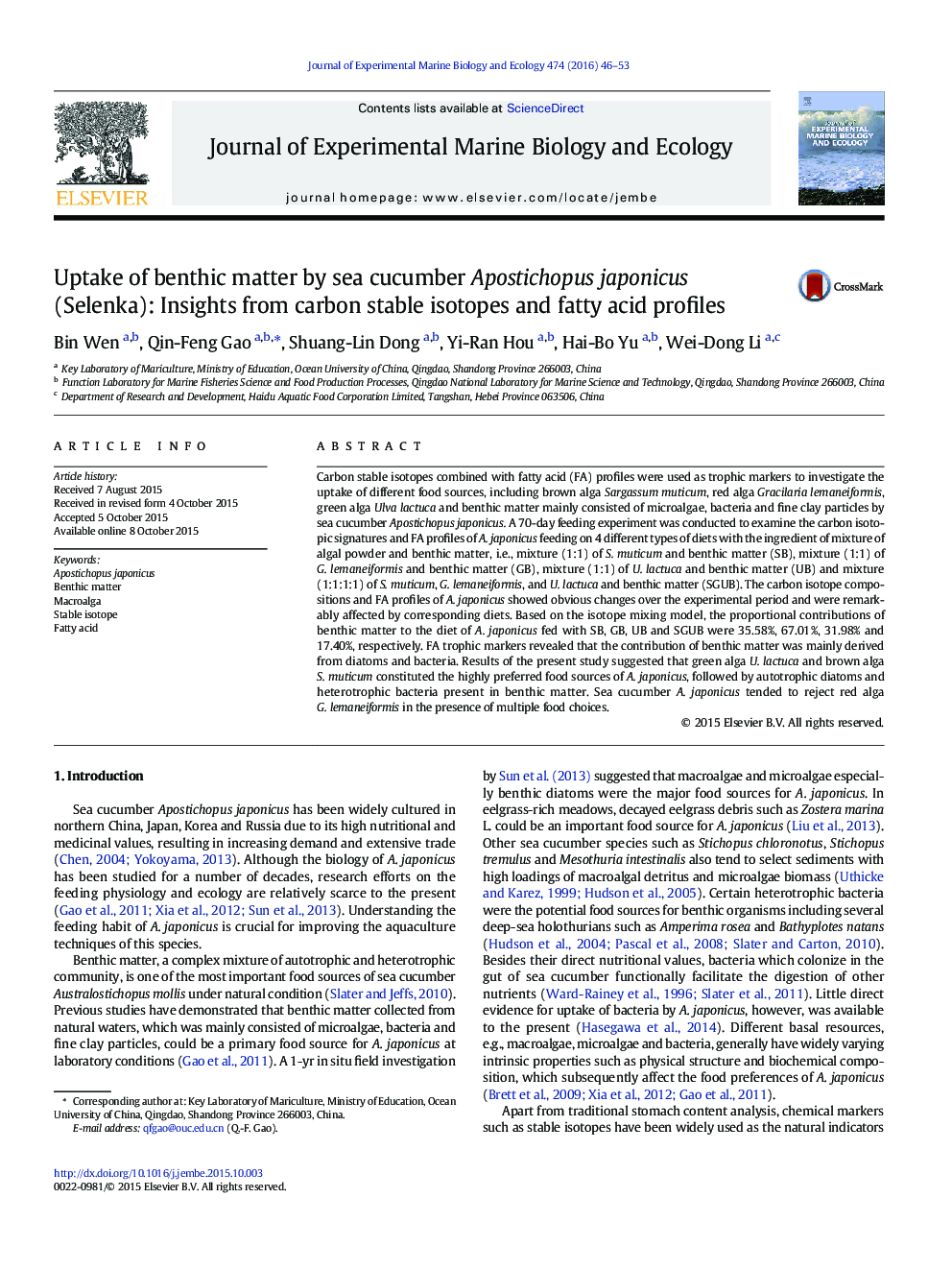| کد مقاله | کد نشریه | سال انتشار | مقاله انگلیسی | نسخه تمام متن |
|---|---|---|---|---|
| 4395302 | 1618401 | 2016 | 8 صفحه PDF | دانلود رایگان |

• Carbon stable isotope and fatty acids were used to examine the food preference of sea cucumber Apostichopus japonicus;
• Macroalgae Ulva lactuca and Sargassum muticum constituted the highly preferred food sources of A. japonicus;
• The contribution of benthic matter was mainly derived from diatoms and bacteria;
• Sea cucumber tended to discriminate against Gracilaria lemaneiformis in the presence of multiple food choices.
Carbon stable isotopes combined with fatty acid (FA) profiles were used as trophic markers to investigate the uptake of different food sources, including brown alga Sargassum muticum, red alga Gracilaria lemaneiformis, green alga Ulva lactuca and benthic matter mainly consisted of microalgae, bacteria and fine clay particles by sea cucumber Apostichopus japonicus. A 70-day feeding experiment was conducted to examine the carbon isotopic signatures and FA profiles of A. japonicus feeding on 4 different types of diets with the ingredient of mixture of algal powder and benthic matter, i.e., mixture (1:1) of S. muticum and benthic matter (SB), mixture (1:1) of G. lemaneiformis and benthic matter (GB), mixture (1:1) of U. lactuca and benthic matter (UB) and mixture (1:1:1:1) of S. muticum, G. lemaneiformis, and U. lactuca and benthic matter (SGUB). The carbon isotope compositions and FA profiles of A. japonicus showed obvious changes over the experimental period and were remarkably affected by corresponding diets. Based on the isotope mixing model, the proportional contributions of benthic matter to the diet of A. japonicus fed with SB, GB, UB and SGUB were 35.58%, 67.01%, 31.98% and 17.40%, respectively. FA trophic markers revealed that the contribution of benthic matter was mainly derived from diatoms and bacteria. Results of the present study suggested that green alga U. lactuca and brown alga S. muticum constituted the highly preferred food sources of A. japonicus, followed by autotrophic diatoms and heterotrophic bacteria present in benthic matter. Sea cucumber A. japonicus tended to reject red alga G. lemaneiformis in the presence of multiple food choices.
Journal: Journal of Experimental Marine Biology and Ecology - Volume 474, January 2016, Pages 46–53